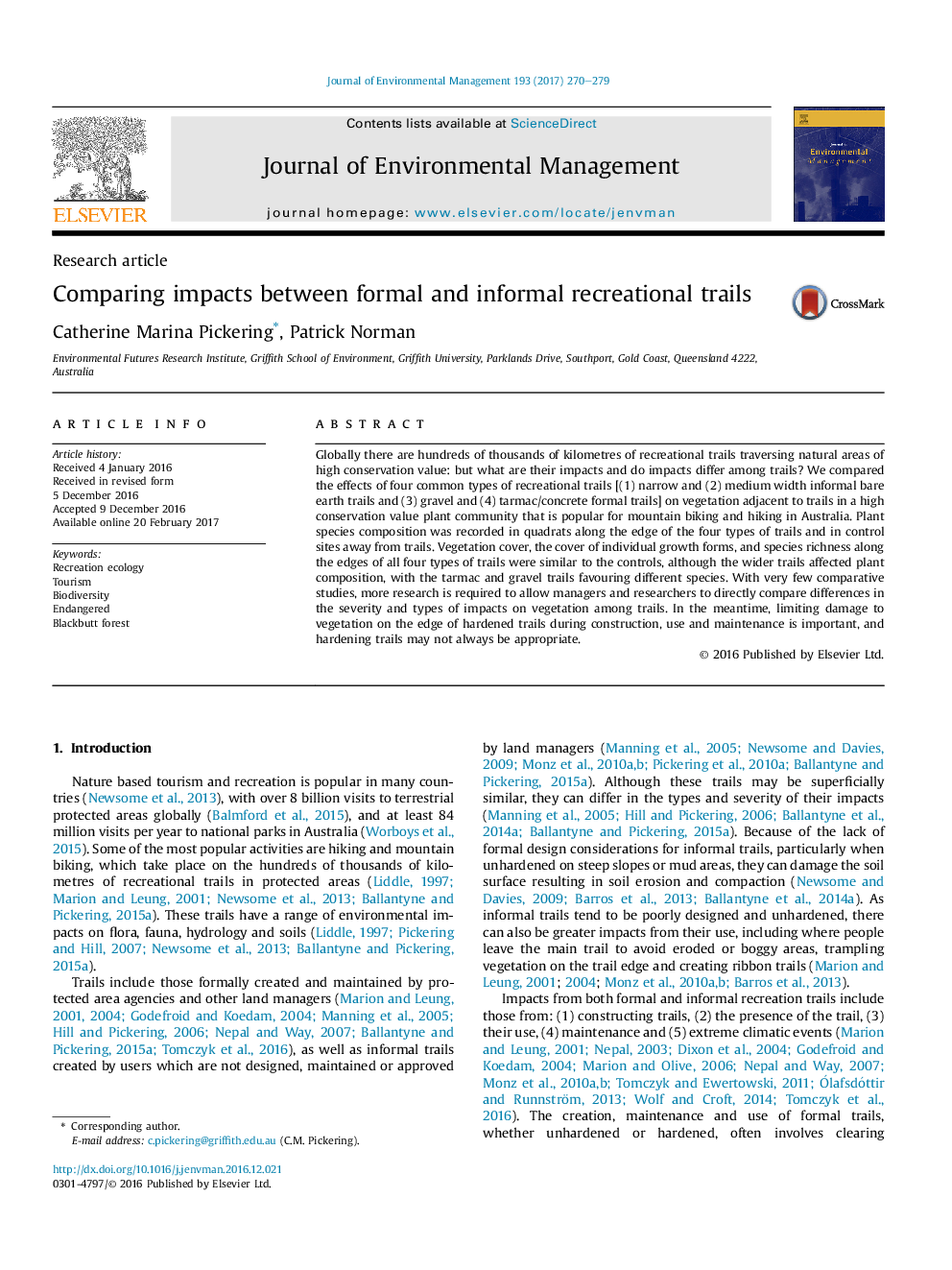| کد مقاله | کد نشریه | سال انتشار | مقاله انگلیسی | نسخه تمام متن |
|---|---|---|---|---|
| 5116830 | 1485222 | 2017 | 10 صفحه PDF | دانلود رایگان |
- More research comparing impacts from different types of trails is required.
- Wider formal trails can alter plant composition on trail edges.
- Narrow informal trails can do less damage to vegetation on trail edges.
- Trail hardening and widening are not always be the best solution.
Globally there are hundreds of thousands of kilometres of recreational trails traversing natural areas of high conservation value: but what are their impacts and do impacts differ among trails? We compared the effects of four common types of recreational trails [(1) narrow and (2) medium width informal bare earth trails and (3) gravel and (4) tarmac/concrete formal trails] on vegetation adjacent to trails in a high conservation value plant community that is popular for mountain biking and hiking in Australia. Plant species composition was recorded in quadrats along the edge of the four types of trails and in control sites away from trails. Vegetation cover, the cover of individual growth forms, and species richness along the edges of all four types of trails were similar to the controls, although the wider trails affected plant composition, with the tarmac and gravel trails favouring different species. With very few comparative studies, more research is required to allow managers and researchers to directly compare differences in the severity and types of impacts on vegetation among trails. In the meantime, limiting damage to vegetation on the edge of hardened trails during construction, use and maintenance is important, and hardening trails may not always be appropriate.
Journal: Journal of Environmental Management - Volume 193, 15 May 2017, Pages 270-279
